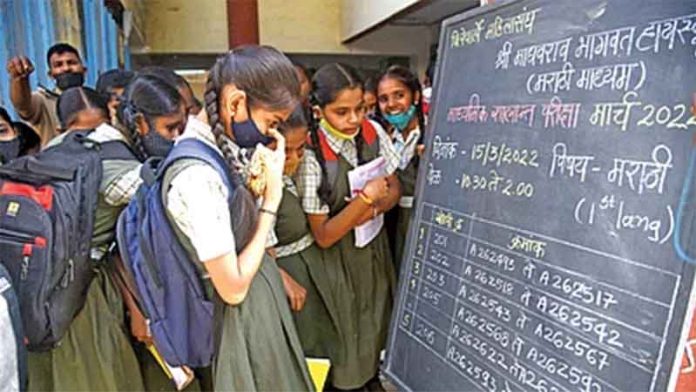– Mohd Ziyaullah Khan, Nagpur
The Maharashtra government’s recent decision to make Hindi a compulsory third language alongside Marathi and English from Classes 1 to 5 has triggered widespread backlash from political leaders, cultural thinkers, and language rights activists. While the government cites alignment with the National Education Policy (NEP) 2020, critics argue that the move is more political than pedagogical – and poses a deeper threat to regional linguistic identity and India’s federal ethos.
The Language Directive and Its Fallout
In a state known for its rich tradition of linguistic pride and movements like the Samyukta Maharashtra campaign and the Marathi manoos agenda, this directive has touched a raw nerve. The Maharashtra Navnirman Sena (MNS) chief Raj Thackeray has strongly condemned the move, labelling it as an “imposition” of Hindi and demanding its immediate withdrawal.
Though the government has since softened its tone by stating that Hindi will “generally” be taught as the third language in Marathi and English medium schools, it has failed to assuage public anger. Raj Thackeray has now urged citizens to resist what he views as an agenda to impose Hindi and marginalise Marathi in its own homeland.
Language Politics Beyond Tokenism
In a compelling interview with Rediff.com, Dr Deepak Pawar, president of the Marathi Abhyas Kendra, linked the decision not just to the cultural dominance, but also to employment politics and linguistic hegemony.
“This is not an academic decision – it’s a political one,” Dr Pawar argues. He points out that the sudden push for Hindi benefits North Indian graduates with B.Ed. degrees in Hindi, who are seeking employment, while Marathi-speaking job seekers continue to struggle for opportunities even in Marathi-medium or state-affiliated schools.
Pawar highlights a deeper concern: the use of language policy as a backdoor to implement the broader Hindi-Hindu-Hindustan agenda – a cultural and political ideology promoted by the RSS and its affiliates, aimed at creating a uniform national identity that sidelines regional cultures and languages.
A Dual Identity Crisis in Maharashtra
Dr Pawar suggests that Maharashtra is currently facing a dual identity crisis. On the surface, it carries a grand, confident self-image – visible in institutions prefixed with “Maha” like MahaRashtra, MahaAgro, and MahaGenko. But socially and politically, there’s a growing degeneration and anxiety among Maharashtrians about their language, employment, and cultural space.
Public reaction to the Hindi directive is shaped by the state’s linguistic legacy. Historically, Marathi speakers accepted Hindi more easily than other southern states due to a shared Devanagari script. But this “self-killing” cultural tendency, as Pawar describes it, is now being challenged, especially as the lived experiences of Maharashtrians reveal growing marginalisation – in employment, education, and even day-to-day interactions in cities like Mumbai.
Employment, Power and the Battle for Space
Much of the public frustration stems from economic competition and demographic shifts. As the organised job sector in Maharashtra shrank in the early 2000s, unorganised sectors and service jobs became the new battleground. Here, lower-middle-class North Indians – often willing to work at lower wages – outcompeted Marathi-speaking locals. Raj Thackeray’s MNS capitalised on this tension, particularly during the 2006 agitation against North Indians in Mumbai.
Moreover, lack of Marathi in central government offices, banks, and railways further alienated the locals. Despite circulars from the RBI and pressure from political parties, many institutions in Maharashtra still offer services only in Hindi and English.
From Cultural Coexistence to Cultural Anxiety
What’s new – and alarming – is the emergence of linguistic conflict at the ground level. Over the past two years, there have been multiple reports of North Indian residents in Mumbai questioning the use of Marathi in public interactions. Similar tensions have arisen with Gujarati communities in semi-urban areas.
This has created a dual confrontation for Maharashtrians – numerical competition with North Indians for jobs, and a financial power imbalance with Gujaratis and Marwaris over control of businesses and urban spaces.
The latest Hindi mandate has added fuel to this fire. The anger is not just about a language – it’s about ownership, survival, and identity. However, it is important to check their bigger agenda.
The broader concern, according to critics, is the RSS-led push for homogenisation – a unified national identity shaped by Hindi, Hindu, and Hindustan. Dr Pawar warns that this “one nation, one language, one culture” ideal threatens India’s federal linguistic fabric, which has always allowed space for multiple languages, faiths, and regional identities to flourish.
A Call to Action – Or a Missed Opportunity?
Despite the growing backlash, Dr Pawar sees in this moment an opportunity – not just for political posturing, but for redefining Maharashtra’s language policy in a constructive way. The anger against Hindi imposition could be channelled into making Marathi an instrument for real employment, for strengthening regional education systems, and for protecting the cultural dignity of the state. “The question is,” Pawar says, “whether Maharashtra will seize this opportunity – or misses the bus again.”
[Mohd Ziyauallah Khan is a freelance content writer & editor based in Nagpur. He is also an activist and social entrepreneur, co-founder of the group TruthScape, a team of digital activists fighting disinformation on social media.]




